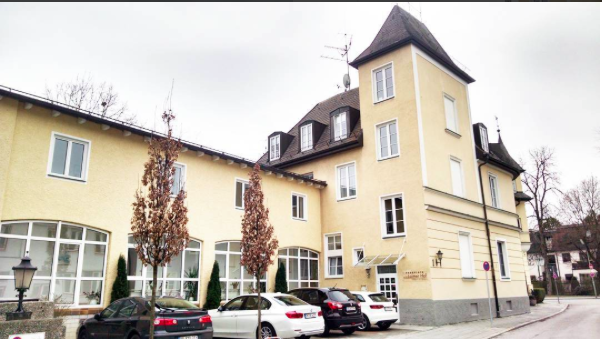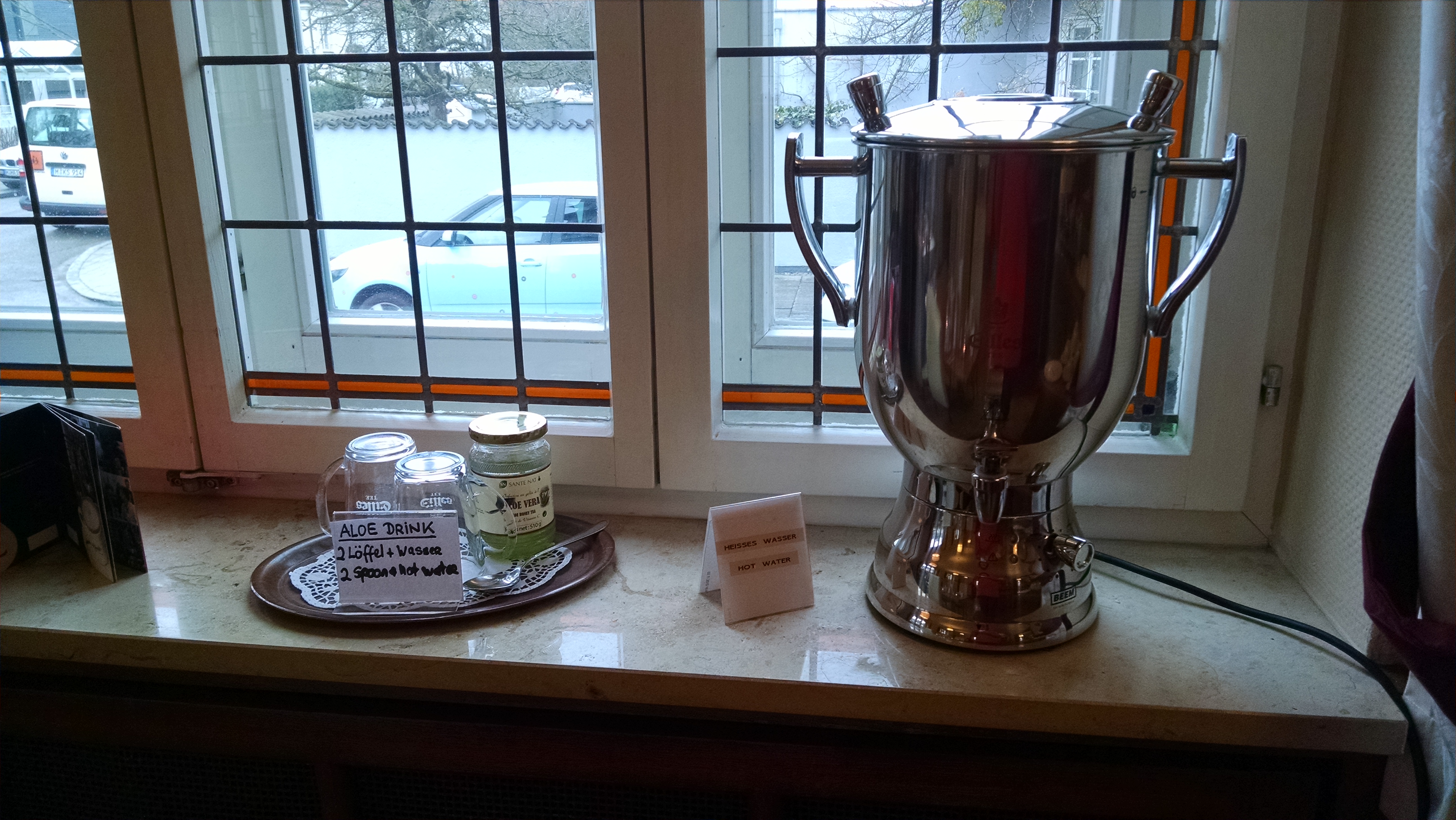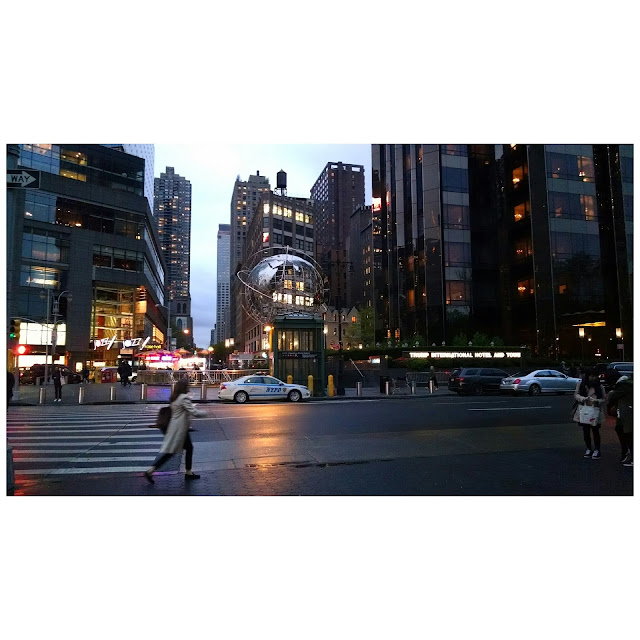“The city with a heart” as Munich is called, it is truly a small global city packed with roughly one million people. There is an old-world charm surrounding the capital of Bavaria; here, you can almost imagine you are a princess or prince stepping out of a fairy tale castle, as you walk about the cobble-stoned streets of this busy old-world place.
 |
| Inside the ballroom at Nymphenburg Castle |
Munich is one of my favorite places in the world because it is so fairy-tale like and close to the Alps. While visiting Munich for the second time, also for three weeks (a good duration to see all the sights, and to take a few day trips to nearby towns as well), I’ve complied my top ten favorite tourist destinations.
 |
| Flying over Europe at night towards Warsaw, Poland |
If you love art and history, Munich is a wonderful destination. In particular, my top 10 favorite places to visit:
1. The Residenz Museum
Situated in the square in downtown Munich, right next to Odeonsplatz, is the Muenchen Residenz. Inside, there are restored rooms and galleries upon galleries of paintings and furnishings from the Whittelsbach family’s old royal residence. Though the building was burned down, the interiors have been restored — behold, jeweled crowns and tiaras, old swords with gilt stones in their hilts, and winding rooms like a maze filled with rich colors and chandeliers from centuries past. My favorite place inside the Residenz? The Antiquarium, where the curved ceiling stretches from entrance to exit with rich frescos, and portraits in gilt frames and white busts line the room’s stone floors.
 |
| Inside the Munich Residenz |
2. BMW Welt
Shaped like a new-age modern piece of art, the architecture of the BMW Welt is worth visiting, especially at night, when the twisted glass structure glows with a soft purple light outside, and inside, the cars gleam in the artificial lights. Any car lover will enjoy a visit to the BMW Welt, where small cars mix with new cars, and a range of models are displayed in a large, airy, two-leveled structure. Walking inside this place gives me the feeling of walking on the moon. Take a picture standing next to a car, or riding one of the large, super-fast-looking motorcycles. It’s free to browse inside the BMW Welt, but the car museum adjacent to it costs money if you want a guided tour.
 |
| Inside the BMW Welt |
3. Neue Pinakothek
Who doesn’t love the famous painting of bright, cheerful sunflowers clustered in a simple urn by Vincent Van Gogh?
 |
| Print of Sunflowers by Vincent Van Gogh |
You can see it in real life, with your own eyes, in the Neue Pinakothek, which contains galleries filled with collections of more “modern” painters. Situated in what I call, “Munich’s Art Neighborhood,” you can walk from the Neue Pinakothek to the Alt Pinakothek (where the “old” painters’ collections are displayed), to the Egyptian Museum, the Brandhorst Museum, and the Lenbachaus. Tip: go on Sundays to view art — most galleries (besides the Lenbachaus) can be viewed for 1 Euro.
4. Englischer Garten
Mother Nature’s art is often beyond compare, although art is in the eye of the beholder.
Walking through the Englischer Garten takes one back to an era long-ago, and transports the strollers, joggers, dog-walkers, and bicycler’s into the era of Jane Austen’s time. Imagine you are walking in the late 1800s in these natural gardens, which stretch along the Isar river on the east side of Munich. You can view large swans gliding like white apparitions in the evening darkness if you find the pond. Don’t expect to cover all of it in one go, however — like Central Park in New York, this city garden is really a large expanse of nature inside a concrete jungle.
 |
| Capturing the sunset on a bridge over the Isar |
 |
| The Isar at sunset |
5. Nymphenburger Schloss – “Castle of the Nymphs”
It’s hard to visit Germany and not visit an old palace.
This one looks like it comes straight out of a fairy tale, with a glittering ballroom inside the main palace that you can view when you tour the rooms, leading to galleries of the famous 30 beauties of Bavarian ruler Max Emanuel (his consorts). The main pavilion was completed in 1675 and the palace, itself, has been a favorite amongst Bavarian rulers for centuries. It is now a museum, and the immaculate gardens and acres of forest are open to visitors as well.
6. Museum Brandhorst
It’s worth it to visit the Brandhorst museum if you want a glimpse into the hearts and minds of modern art and their creators. Although some of the collections will make you go, “huh?” the point is to expand you mind and appetite for creativity, so give it a go. I would recommend going on Sunday, however, when entrance is only 1 Euro, to avoid the feeling of buyer’s disappointment if you don’t like what you see. Modern art, is, quite often, intended to shock, after all.
A sign of the times.
 |
| Image of Cy Tombly’s paintings in Museum Brandhorst, from munchen.de |
7. Staatsoper – Munich National Theatre
It is difficult to buy a ticket to the prized ballet performances at the Munich Staatsoper, so check a month in advance, to be safe. Performances take place in a round theatre with gilt rococo decorations all over the interior, and plush red seats. You can still grab a spot in the balconies for 7 Euros, if you can’t find a place to sit, but beware, the view is not as good because you are in the galleries. It is worth it, however, any way you can get in, because the dancers are excellent and the music is impeccable. Often, the ballets will be famous classics like “Swan Lake,” “Giselle,” or “Romeo and Juliet,” so if you go, you will be treated to a life-changing artistic experience. Dress up, because everyone else does, too.
 |
| At “Giselle” |
 |
| View of the Munich National Theatre |
 |
| Standing by Odeonsplatz |
8. Pinakothek Moderne
If you love art, and want to consider yourself a snob, wander around the rooms of the Pinakothek Moderne (Museum of Modern Art). There, you will find large, blown up photographs from the 1970s of street-scenes in Canada, crumpled metal from scrapped cars stacked in strange sculptures, a display of old computers, chairs, a 1960s mod living room, and much more. The more traditional “paintings” are in there, as well, so if you feel flummoxed by the display of rectangular cabinets or the rug, or even perhaps the large “omelet” painting-display, you’ll be rewarded for your efforts with lush colors of rich tones depicting dark-skinned women bathing or dancing, and plenty of long-haired maidens bathing naked.
What’s not to love about being a painter?
 |
| Painting in the Museum of Modern Art |
9. Marienplatz
Just walking through Marienplatz will transport you to the “old world.” However, it is also one of the best places to go in Munich to see old architecture — look at the Old Town Hall and the New Town Hall — and the Fraunkirche is right around the corner, look for the two tall towers (this gave English bombers directions during World War II, which is why, unlike most of rebuilt Munich, this church was not destroyed by fire bombs).
Of the many places that do not accept credit cards, you can still buy food at Hans im Glueck, which is a popular burger chain in Munich that also serves vegetarian burgers.
 |
| Munich dress code in winter — long down coat, jeans, and boots. The more designer, the better. |
 |
| Expensive fur coats and leather gloves were common Munich dress a few decades ago |
10. Viktualien Markt
Food is an art form in and of itself, and if you are not shy, you can wander the many stalls of spices, fruits, nuts, vegetables, meats, and breads to find samples of these tasty offerings. Of course, you might be tempted to buy some of the food, so bring some cash with you. Although Munich is a global world city, “nubar” or “cash only” is still quite a popular way for vendors transactions.
 |
| Fruits at Viktualien Markt |
Bonus places:
Angel of Peace — It’s a little park with stairs leading up to a painted stone building with a tall golden statue of an angel near Munchener Freiheit.
 |
| Next to the Angel of Peace, photo by Raphael Weiss |
Enjoy Munich! Remember the Lenbachaus is not 1 Euro on Sundays, and dress up for the ballet!





 The only downside of this hotel is that it is a little out of the way from Munich’s city centre if you are without a car, although the 16/17 street tram will take you down to the Hauptbahnhof in a short 20 minute ride or less. Overall, the neighborhood is quaint, quiet, and gives one the ability to enjoy a sampling of what life in Munich is like with the comfort and amenities of a full-service hotel. The staff is very friendly, family owned, and willing to assist guests, and would do anything to assure you a pleasant stay, so if the Nymphenburger Palace is on your sightseeing list, this is an excellent location for a short trip.
The only downside of this hotel is that it is a little out of the way from Munich’s city centre if you are without a car, although the 16/17 street tram will take you down to the Hauptbahnhof in a short 20 minute ride or less. Overall, the neighborhood is quaint, quiet, and gives one the ability to enjoy a sampling of what life in Munich is like with the comfort and amenities of a full-service hotel. The staff is very friendly, family owned, and willing to assist guests, and would do anything to assure you a pleasant stay, so if the Nymphenburger Palace is on your sightseeing list, this is an excellent location for a short trip.








































